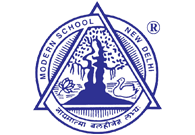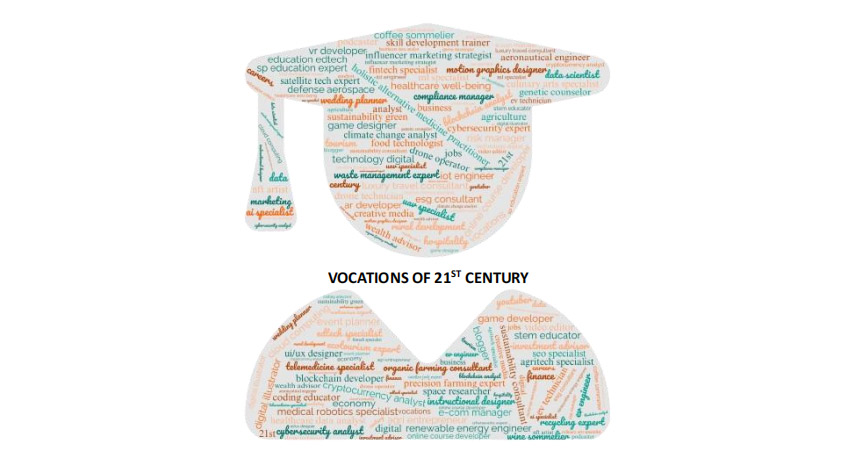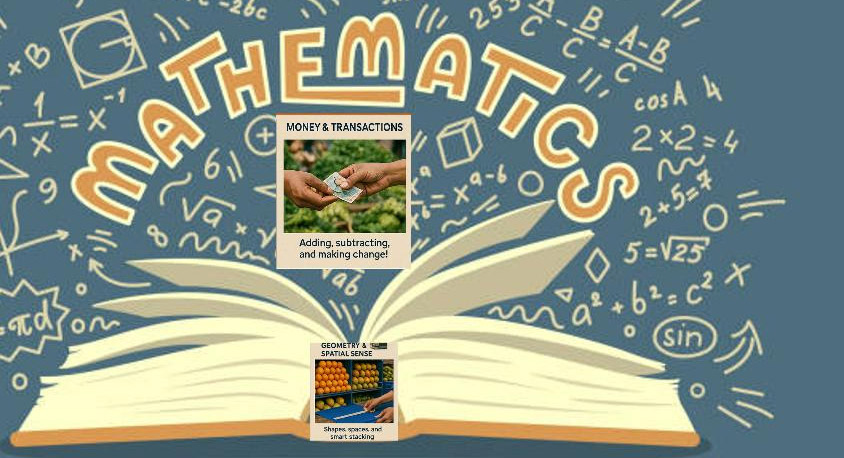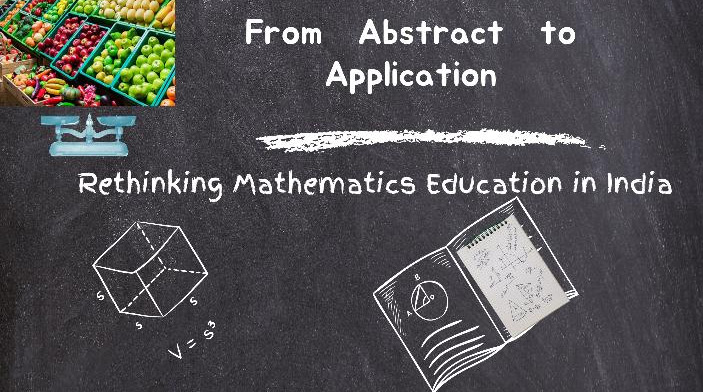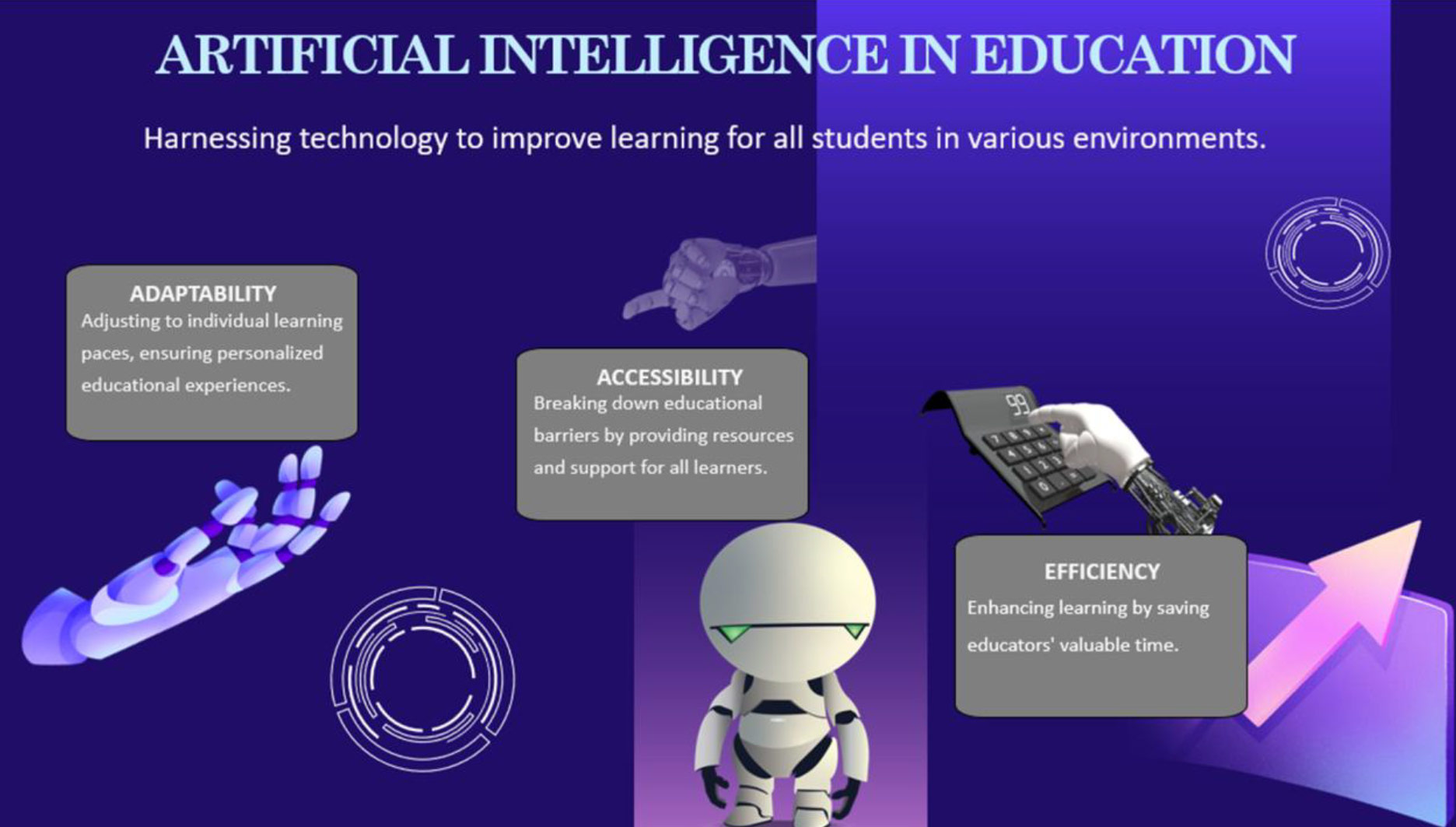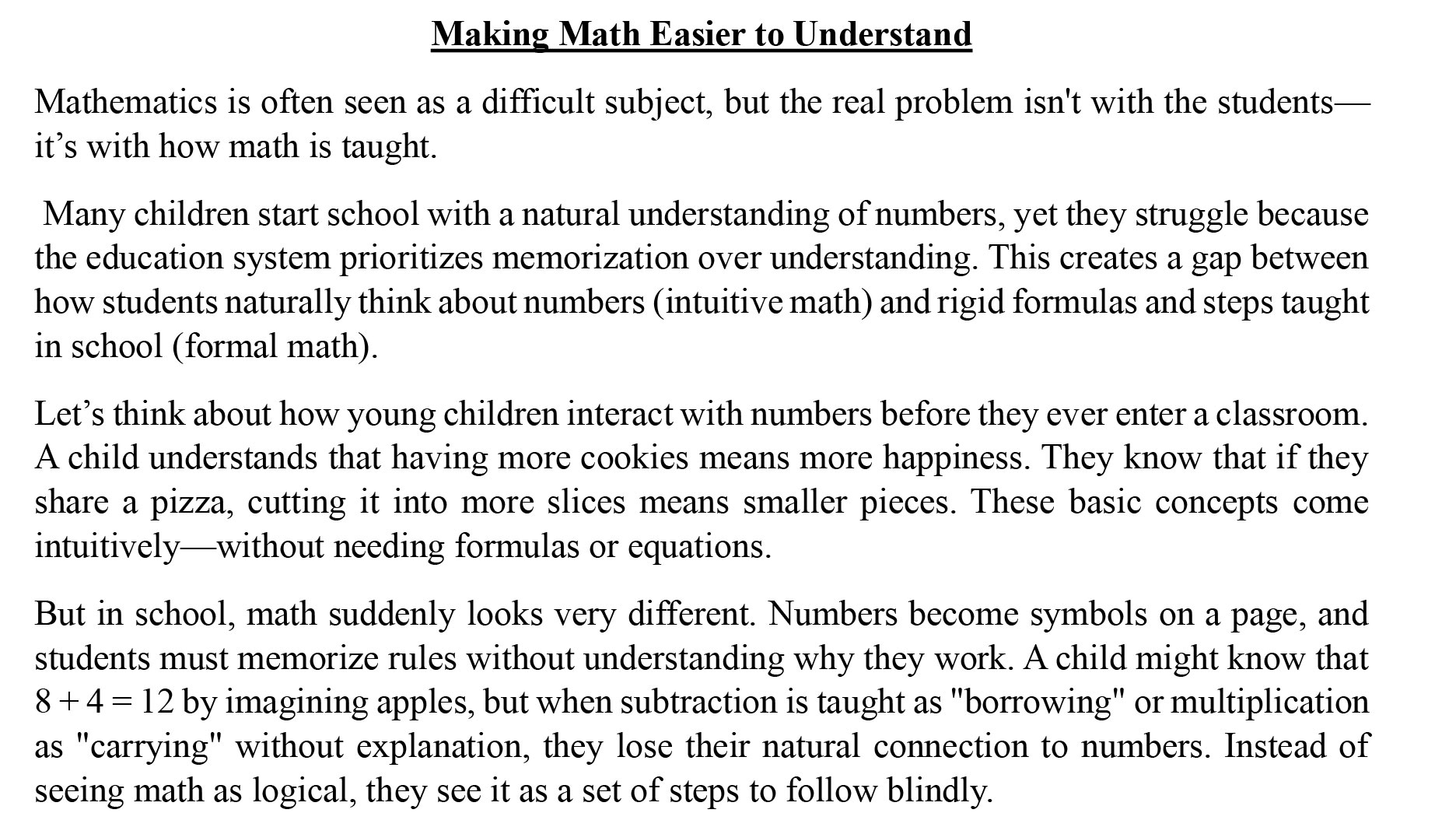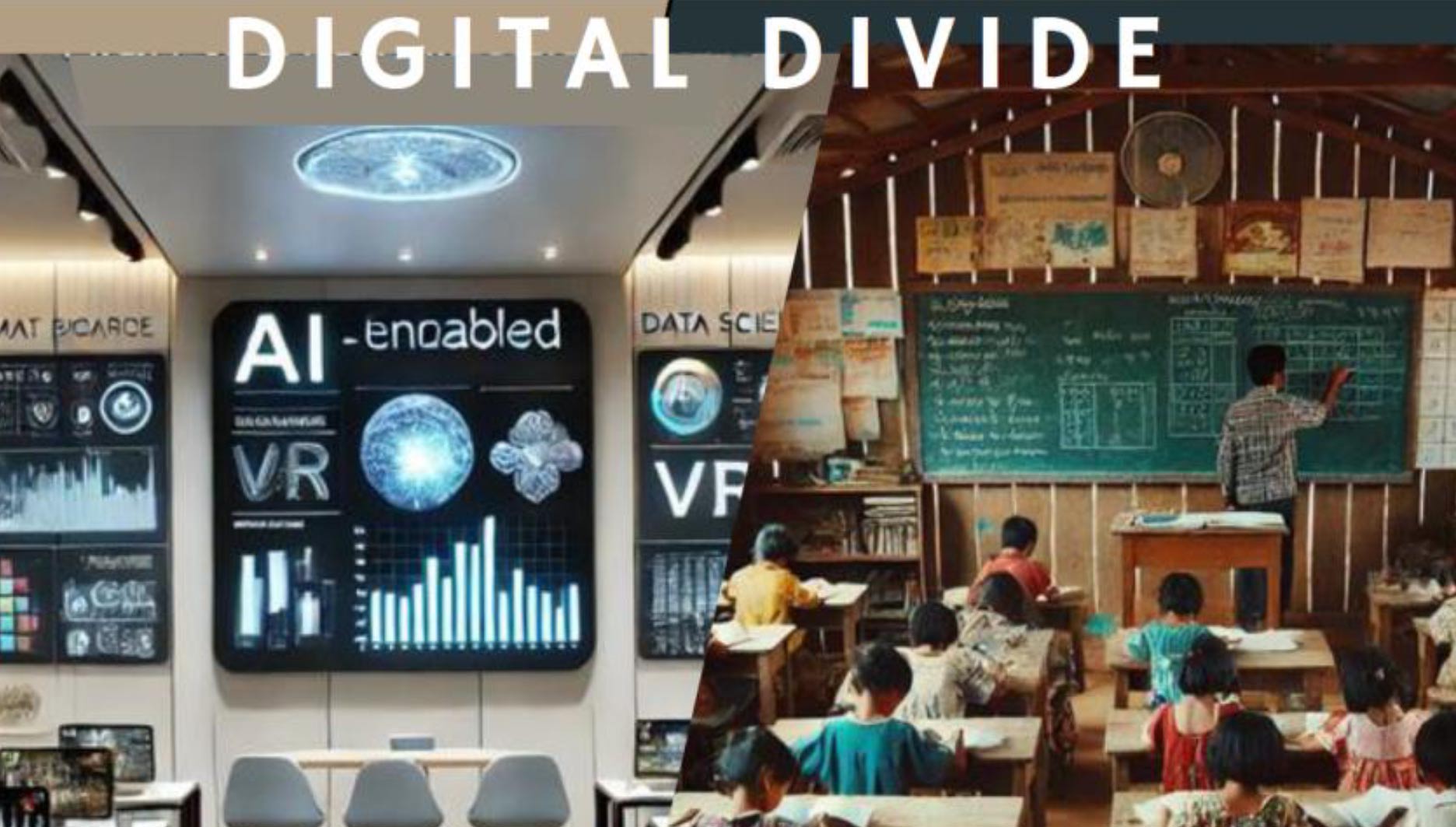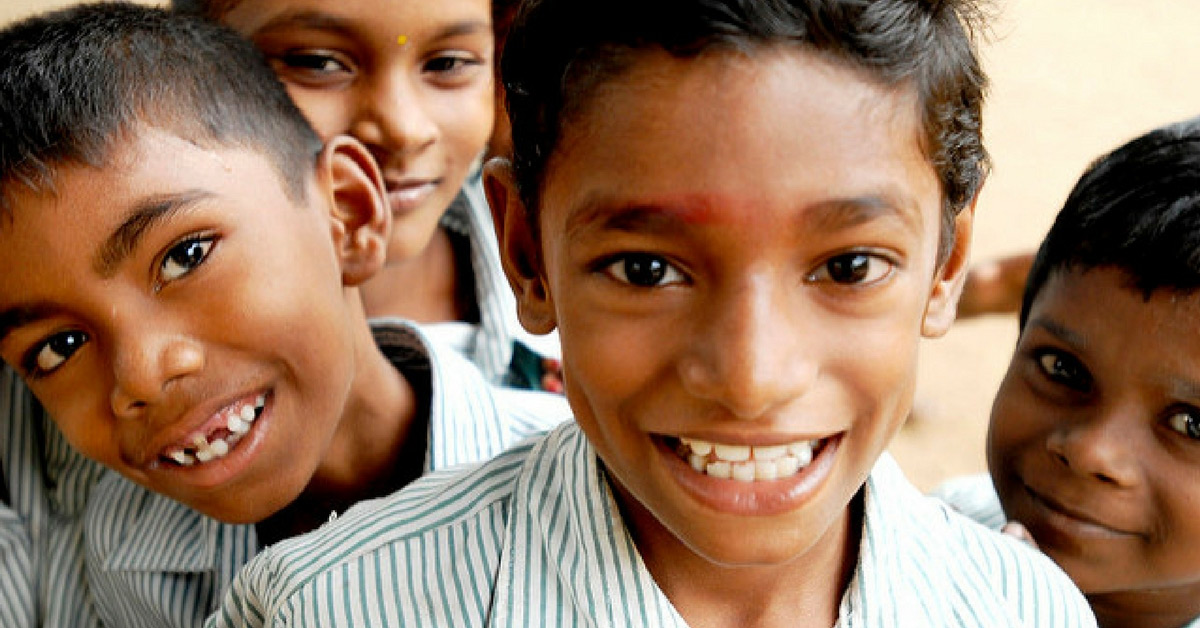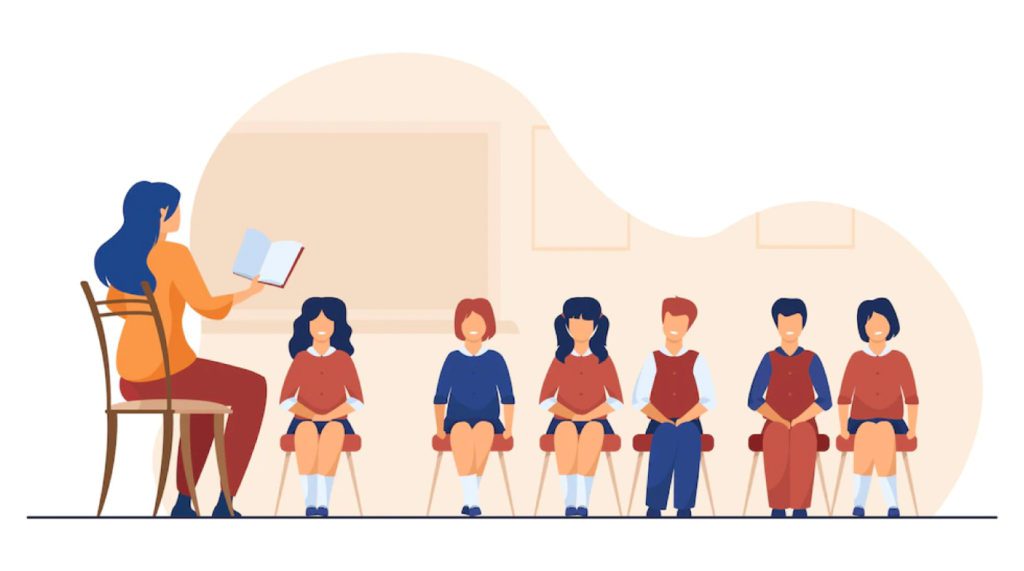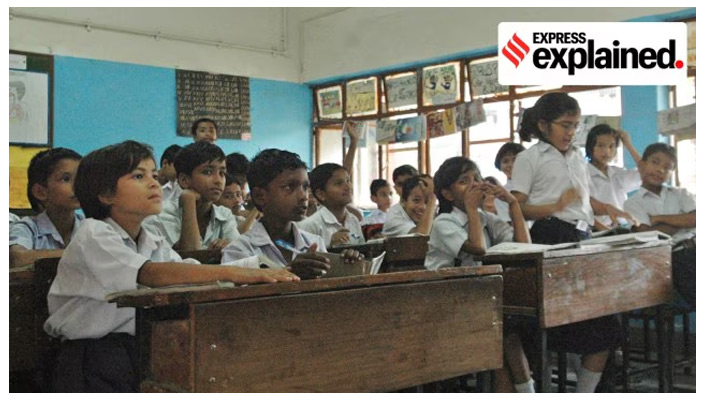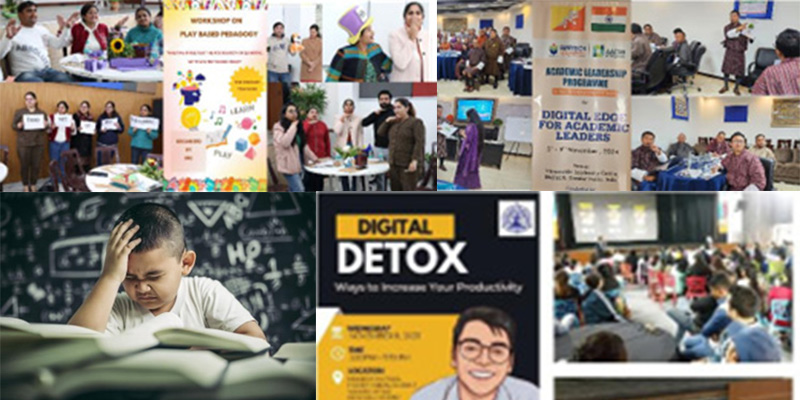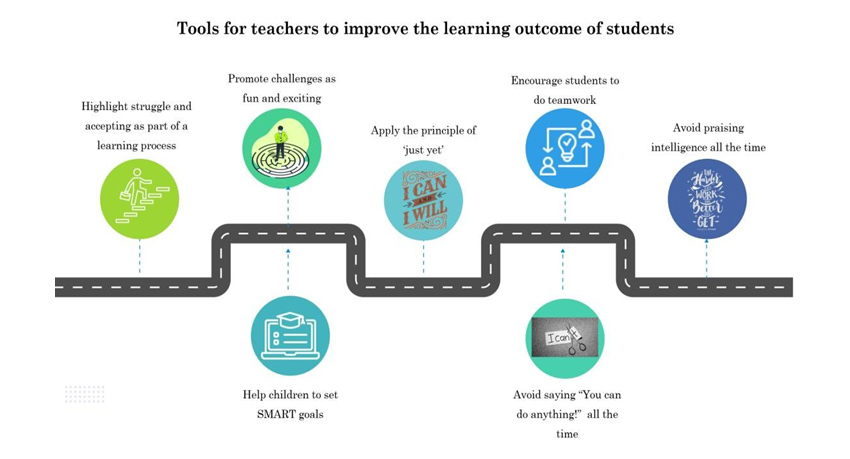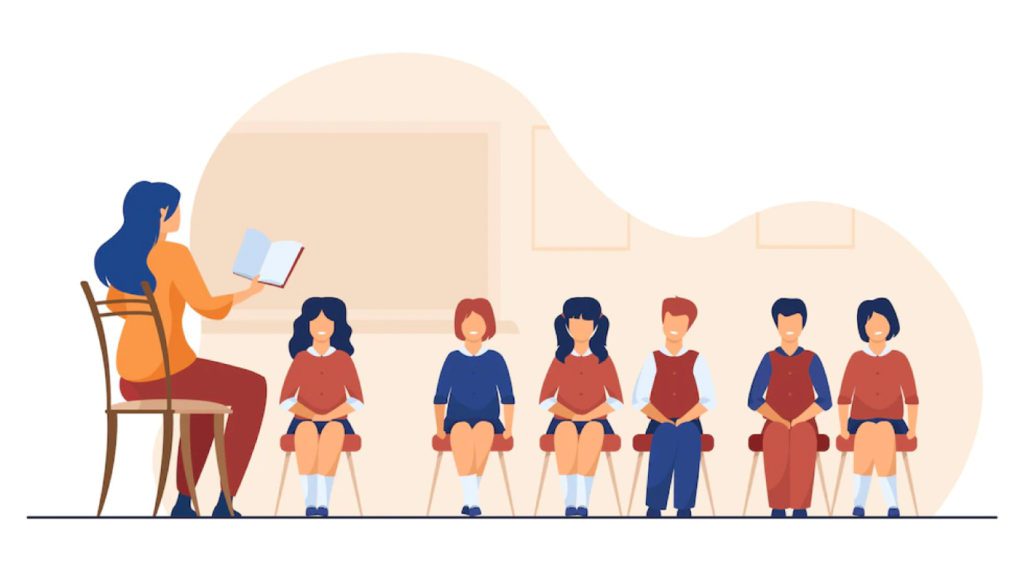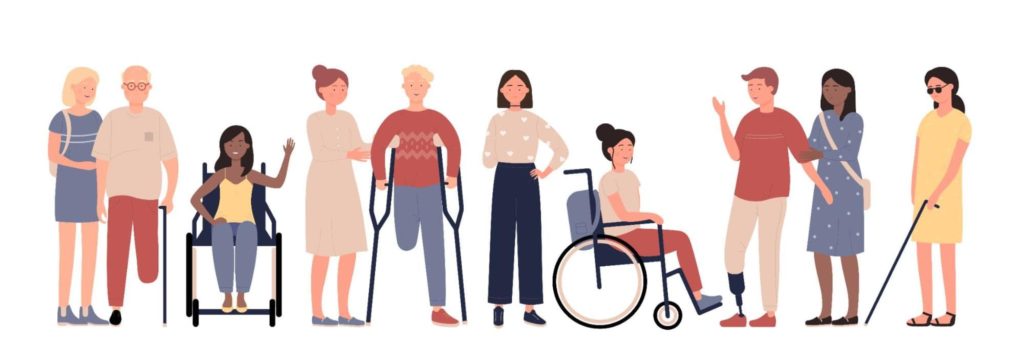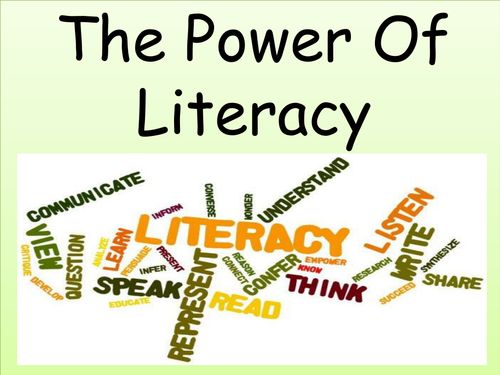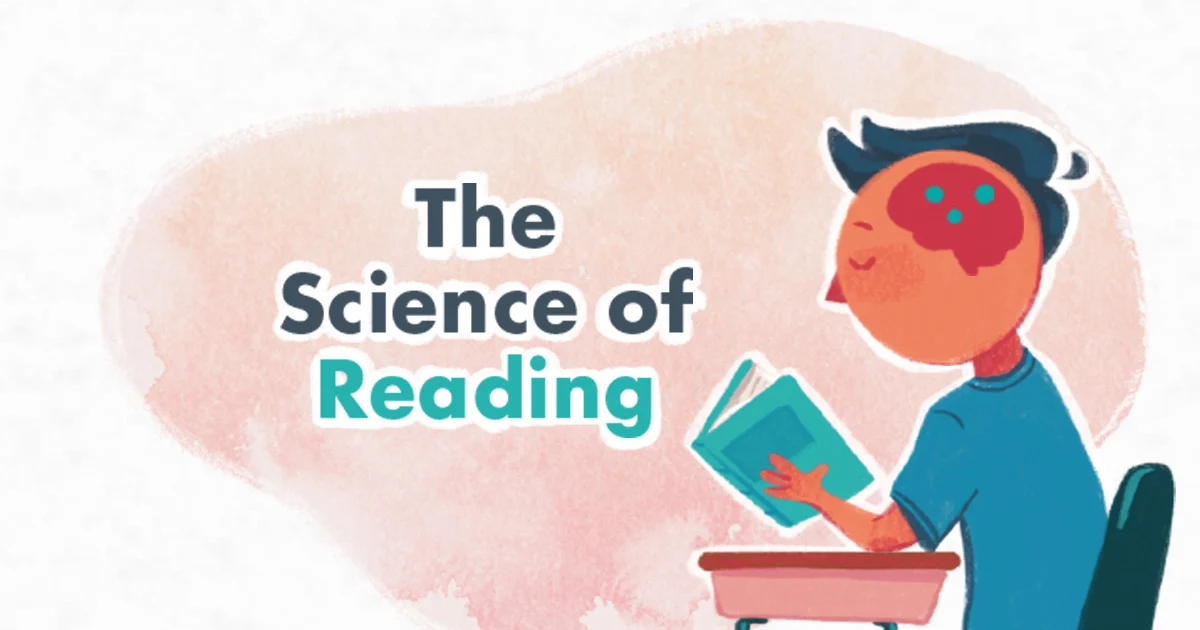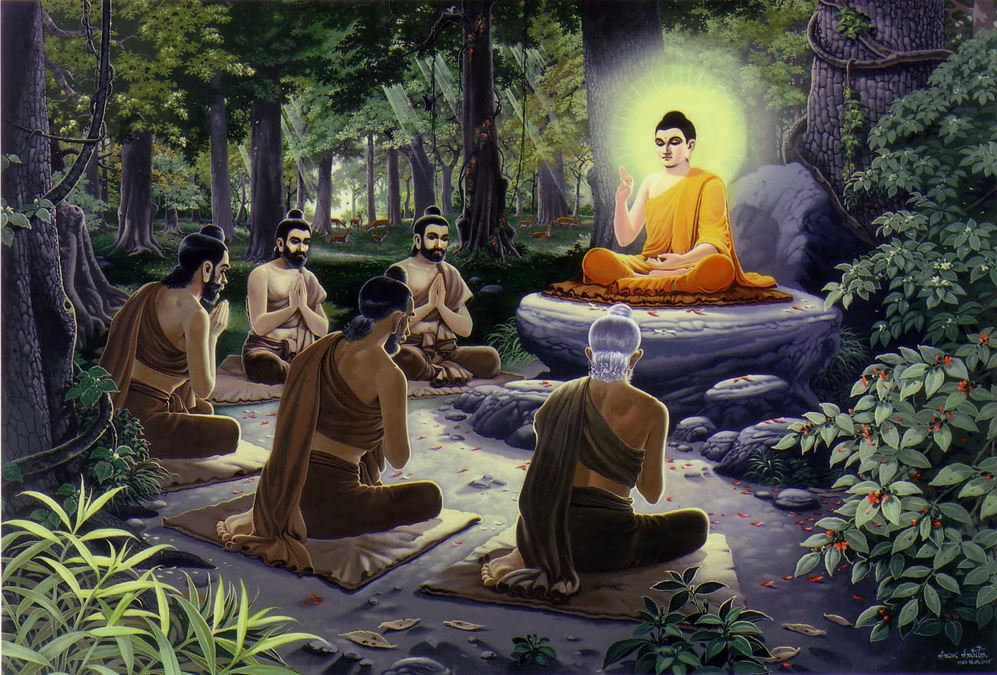Background
The global economy is undergoing rapid transformation, driven by the accelerating pace of technology advancement. As a result, education curricula are struggling to keep up with the evolving demands of the contemporary job market. In the last decade, it has been observed that traditional and stereotyped job roles are transforming, and new job roles are emerging due to automation, globalization, and fast changing consumer preferences. There is increase in demand for digital skills that had not been traditionally taught in schools resulting in a skill gap between the skills that industries require and the skills that students possess and hence could not meet industry demands.
India is home to more than 600 million people aged between 18 and 35, with approximately 65% of the population under the age of 35. This demographic dividend is expected to persist at least until 2055–56 and will peak around 2041, when the share of the working-age population 20–59 years is expected to hit 59%. But UNICEF report for 2019 indicated that about 70 percent of Indian youth may lack the necessary education and skills for employment by 2030, which will affect their productivity
Analysing the above data, it can be concluded that India has a vast potential advantage, especially at a time when countries around the world are facing declining birth rates and tight labour markets. India's abundant labour force cannot only achieve domestic needs but also tap into opportunities in the global market. Realizing both of these possibilities would enable India to make a significant place in the geopolitical global map. The need for an hour is to accelerate labour upskilling and to streng then women's participation in the workforce if India has to achieve its economic potential.
New Education Policy to Cater to the Dynamic Employment Landscape and Global Ecosystem
After partition, the Indian education system remained the inheritance from the colonial era placing a heavy emphasis on examinations and marks. The execution of the policies left gaps in its vision and the focus remained on a rote-based approach to learning rather than fostering critical thinking and practical skills. The curriculum did not keep pace with time and hence did not align with the needs of a rapidly evolving global economy. Disparities in access to quality education were prevalent, with urban areas having better facilities and resources compared to rural regions. Additionally, there was a perceived lack of flexibility in the system, limiting students' choices in terms of subjects and career paths.
In the global scenario, automation and technological revolution driven by artificial intelligence are changing the employment and industrial landscape of the world economy. Moreover, the shrinking
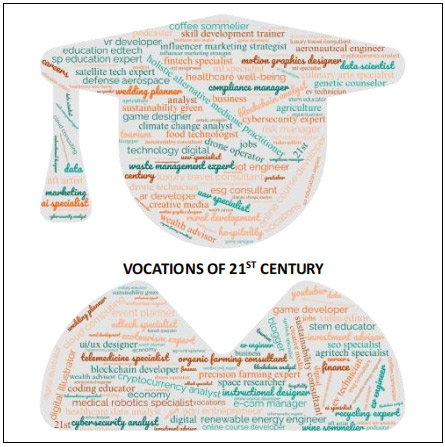 workforce in developed countries leads to labour shortages, prompting a shift towards global talent acquisition and migration to fill skill gaps.The introduction of the National Education Policy 2020 marked a significant step towards revamping and modernizing the Indian education system to make it more inclusive, flexible, and aligned with contemporary needs. The focus has shifted not only to what children learn but also to how they learn – emphasizing critical thinking, problem solving, creativity, interdisciplinarity, and the ability to involve, adapt, and absorb new material in novel and changing fields. It is not only about academics but also about building character and imparting values to learners to be ethical, rational, compassionate, and caring, while at the same time preparing them for gainful, fulfilling employment
workforce in developed countries leads to labour shortages, prompting a shift towards global talent acquisition and migration to fill skill gaps.The introduction of the National Education Policy 2020 marked a significant step towards revamping and modernizing the Indian education system to make it more inclusive, flexible, and aligned with contemporary needs. The focus has shifted not only to what children learn but also to how they learn – emphasizing critical thinking, problem solving, creativity, interdisciplinarity, and the ability to involve, adapt, and absorb new material in novel and changing fields. It is not only about academics but also about building character and imparting values to learners to be ethical, rational, compassionate, and caring, while at the same time preparing them for gainful, fulfilling employment
The NEP 2020 has also catered to those set of students who might like to drop out of the stereotyped academic streams and opt for some vocational courses due to family and financial reasons or for their interests. It is putting a lot of emphasis on the integration of vocational education in the education system which will help in reducing the dropout rate of children from mainstream education and making it skill-based and vocational to take advantage of the demographic dividend India is going to have in the coming years.
The NEP has a clear mandate to expose at least 50% of the students from class six onwards to vocational education, by including vocational education in mainstream schooling systems. Skill labs are set up in collaboration with polytechnics and local industries in schools to give them near real experience. Many vocational courses have started through online mode also by Indira Gandhi National Open University (IGNOU), National Institute of Open Schooling (NIOS) etc.
Government's Initiatives Towards vocationalisation of Education
Governments at the Central and State levels are undertaking several initiatives to give due recognition to vocational education in preparing students for the job market and enabling them to contribute to economic development. The efforts made by them are aimed at creating a workforce that is skilled, adaptable, and ready to find meaningful livelihood pathways. They need to be equipped with a range of skills, from transferrable core competencies to highly technical industry-specific knowledge to enter the new sectors.
The National Skill Qualification Framework (NSQF) compliant vocational modules were introduced e.g. vocational modules are offered to the students as an additional subject in secondary level classes (IX & X) and as a compulsory (elective) subject in Sr. Secondary classes (XI & XII). The employability Skill module has been made a mandatory part of the vocational Courses consisting of Communication Skills, Self-Management Skills, Information and Communication Technology Skills, Entrepreneurship Skills, and Green Skills.
The government's decision to establish the Ministry of Skill Development and Entrepreneurship (MSDE) in 2014 demonstrated its intent to address the skills gap. The MSDE's mandate includes the coordination of skills development efforts nationwide and the establishment of a vocational and technical training framework. Prime Minister Narendra Modi also launched the Skill India Mission in 2015, with an ambitious initial target of training 400 million Indians in various skills by 2022. This goal was divided across several different programs. One of them, the Pradhan Mantri Kaushal Vikas Yojana (PMKVY) program, has helped 13.7 million individuals receive training since April 2016. The National Skill Development Corporation has acted as a catalyst for PMKVY, working with 538 training partners to set up about 10,000 training centres across 36 sectors.
On 25 July 2022, the then Minister of State for Education, Smt. Annapurna Devi gave a written reply in the Lok Sabha that the Government of India has initiated various convergence efforts across the skill ecosystem under the "Skill India Mission (SIM)". Under the Mission, more than 20 Central Ministries/Departments are implementing Skill Development Schemes/Programmes to enhance the skill levels of millions of people including School Children on pan Indian basis to create a skilled workforce as per the needs of the industry. The Ministry of Skill Development and Entrepreneurship (MSDE) in association with the Ministry of Education (MoE) is implementing the ‘Skill Hub Initiative’ scheme under Pradhan Mantri Kaushal Vikas Yojana 3.0 (PMKVY 3.0) under which the skill hubs are being created which are providing industry-relevant skill training to eligible candidates free or at subsidized rates that are aligned with industry standards and demands. The objective of this Skill Certification Scheme under PMKVY is to enable a large number of Indian youth to take up industry-relevant skill training that will help them secure a better livelihood. Individuals with prior learning experience or skills will also be assessed and certified under Recognition of Prior Learning (RPL). Under this Scheme, Training and Assessment fees are completely paid by the Government.
https://www.mescindia.org/pradhan-mantri-kaushal-vikas-yojana
In January 2022, the National Council for Vocational Education and Training (NCVET) has also been set up to standardize and regulate the skill development ecosystem. By ensuring vocational education meets industry standards and expectations, it seeks to bridge the gap between education and employment. A few of NCVET's primary objectives are to enhance the quality and relevance of vocational education in India, regulate assessment and certification processes, promote industry integrated learning, promote flexibility, and ensure quality assurance. Through standardized assessments and certifications, NCVET aims to enhance employability and global competitiveness. Its job is to recognize skills in demand at national and international levels and prepare curriculum, set standards, and training mechanisms to popularise, elevate the quality, and make it relevant in the domain of vocational education.
The National Policy on Skill Development and Entrepreneurship 2015 laid out the Skill India Mission and envisaged the creation of Sector Skill Councils (SSCs). Priority sectors have been identified based on the skill gap analysis. To date, the NSDC Board has approved 40 Sector Skill Councils. SSCs are responsible for creating Occupational Standards, competency frameworks, and qualification packs relevant to their sectors.
It is to be noted here that the efforts are proving fruitful as the India Skill Report 2023 reveals an improvement in overall employability among young people, increasing from 46.2 percent to 50.3 percent this year. Additionally, the employable women workforce has risen significantly to 52.8 percent, surpassing the employability rate of men at 47.2 percent.
However, Bridging the skills gap should not just be limited to the formal sector wherein only 9% of the workforce is employed. The skilling mission needs to reach out to the vast informal sector. According to a report titled ‘India’s Booming Gig and Platform Economy’ released by NITI Aayog, India is heading towards the Fourth Industrial Revolution wherein the gig workforce (people engaged in the informal sector and working on online software apps or digital platforms), which stands at about 77 lakhs in 2020-21, is expected to go up to 2.35 crore by 2029-30. Acknowledging their existence, upskilling them, and giving due consideration to this job market is essential.
Challenges that children face while opting out for innovative career streams after high school
Despite the good intentions and efforts put in by the government and the policymakers, children studying in schools are facing teething issues in taking benefit of various schemes coming up for vocationalisation of education. One of the biggest challenges is the lack of awareness as well as access to comprehensive information about available courses and the institutes offering them. Indian parents act as primary decision-makers or influencers in their children's career paths. They prioritize stability, financial security, and social prestige when guiding their children toward career paths and hence prefer their children to choose conventional career paths. Further, insufficient guidance from school aggravates the concern, leaving children uncertain about their options. The unavailability of information regarding career options also acts as a barrier to making informed decisions regarding career choices and courses. Many students, most of them being first-generation high school graduates and belonging to marginalized sections of the society may not be aware of the career opportunities as well as various government schemes and affirmative policies to reap its benefit. Besides peer pressure of following conventional choices also influence the students in their decision making. As many innovative careers do not still have clear roadmaps or standardized qualifications hence students are indecisive to take risk and opt for the opportunities of these sectors.
Hence, to be able to zero in on a suitable course that aligns with not only their interest and abilities but also market needs appear to be a herculean task. Another important aspect is the cost of courses as students are unable to pay such hefty fees. Lack of information about the provisions of scholarships and financial concessions as well as the downgraded societal perceptions towards these options wherein the general opinion of people treats vocational education as the poor cousin of the mainstream education system also restricted the easy existence out of the traditional schooling
A way forward
Schools need to establish a robust career counselling system to help students evaluate their aptitudes, interests, and abilities. Key components include aptitude assessment, interest exploration, skills evaluation, information on career options, guidance on educational pathways, mentorship programs, personalized counselling sessions, skill development workshops, psychometric testing, and regular follow-ups and updates. Schools must organise orientation sessions for parents in order to bridge the gap between conventional mindsets and new opportunities coming due to changing career landscape. They can also either hire teachers having different professional backgrounds or arrange for their in service training to help students understand the dynamic employment landscape.
Besides setting the career counselling system, school can collaborate with the local industries and businesses to provide internships and apprenticeships. Schools in collaboration with other schools and industry can also set up skill labs and can function them as hub and spoke model wherein the nearby schools can bring their students to do practical training in the skill lab. The skill labs can be provided with gamified learning tools and virtual reality simulations to make vocational training engaging and realistic. The curriculum of the skill subjects should incorporate indigenous knowledge and skills, promoting local crafts and traditions through internships or projects.
Dr. Anviti Singh & Mrs. Abha Sadana
References
F. Annette. (2022). What’s the Future of Employment for India's Youth.
Retrieved from
https://idronline.org/article/livelihoods/whats-the-future-of-employment-for-indias-youth/
Lukose, M., & Sharma, P. A. (2023). A Study on the Role of NEP 2020 : Skill Development of Students. Amity International Journal of Teacher Education (AIJTE), 9(1).
Retrieved from
9. A Study on the Role of NEP 2020 Skill Development of Students
Ministry of Education (2022). Steps Taken by the Government to Boost Skill Based Education Under NEP 2020. Press Release.
Retrieved from
https://pib.gov.in/PressReleaseIframePage.aspx?PRID=1844721
NITI Aayog (2022). India's Booming Gig and Platform Economy: Perspectives and Recommendations on Future of Work.
Retrieved from
https://www.niti.gov.in/sites/default/files/2023-02/25th_June_Final_Report_27062022.pdf
Pathak. R.K. (n.d). Reimagining Vocational Education and Skill Building: Background Note.
Retrieved from
Sharma. A. (2021). Why India Lags Behind in Imparting Skills to Its Workforce. Retrieved from https://www.dw.com/en/india-youth-lack-skills/a-56879385
S &P Global (2023). India’s Demographic Dividend: The Key to Unlocking its Global ambitions.
Retrieved from
India's Demographic Dividend: Key to Unlock Global Ambitions | S&P Global
Wheebox (2021). India Skills Report. Retrieved from
https://www.indiaeducationforum.org/pdf/ISR-2021.pdf
Wheebox (2023). India Skills Report. Retrieved from
https://do3n1uzkew47z.cloudfront.net/siteassets/pdf/ISR_Report_2023.pdf
World Economic Forum (2020). The Future of Jobs Report. Retrieved from
https://www3.weforum.org/docs/WEF_Future_of_Jobs_2020.pdf
Yadav. J. (2022). Vocational Skills and National Education Policy 2020. International Journal of Creative Research Thoughts (IJCRT). 10 (5). Retrieved from
IJCRT2205082.pdf

